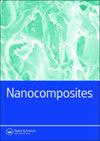On the low reinforcing efficiency of carbon nanotubes in high-performance polymer fibres
IF 3.7
3区 材料科学
Q2 MATERIALS SCIENCE, COMPOSITES
引用次数: 12
Abstract
Abstract Driven by the exceptionally high mechanical properties of carbon nanotubes (CNTs), over the years an extensive research effort has been devoted to the reinforcement of high-performance polymer fibres with CNTs. However, to date, improvements in the strength of these fibres have been rather modest even for relatively high CNT contents. After a brief review of CNT reinforced polymer fibres, here, analytical and numerical finite element models will be used to show that these experimental findings are to be expected based on the intrinsic mechanical properties of these polymer fibres and CNTs, their aspect ratio and interfacial characteristics. Results show that for realistic CNT contents and aspect ratios, the extraordinary strength of CNTs cannot be easily fully exploited in high-performance polymer fibres like Dyneema®or Kevlar®. Even if CNTs are perfectly aligned, bonded and dispersed, the low intrinsic shear strength of these highly anisotropic polymer fibres limits effective stress transfer and nanotube reinforcement. Graphical Abstract高性能聚合物纤维中碳纳米管增强效率低的研究
由于碳纳米管(CNTs)具有优异的力学性能,近年来人们对用碳纳米管增强高性能聚合物纤维进行了大量的研究。然而,到目前为止,即使对于相对较高的碳纳米管含量,这些纤维强度的改善也相当适度。在简要回顾了碳纳米管增强聚合物纤维之后,本文将使用分析和数值有限元模型来表明,基于这些聚合物纤维和碳纳米管的内在力学性能、它们的纵横比和界面特征,这些实验结果是可以预期的。结果表明,对于实际的碳纳米管含量和纵横比,碳纳米管的非凡强度不能轻易地在高性能聚合物纤维(如Dyneema®或Kevlar®)中充分利用。即使碳纳米管完美排列、结合和分散,这些高度各向异性的聚合物纤维的低固有抗剪强度限制了有效的应力传递和纳米管加固。图形抽象
本文章由计算机程序翻译,如有差异,请以英文原文为准。
求助全文
约1分钟内获得全文
求助全文

 求助内容:
求助内容: 应助结果提醒方式:
应助结果提醒方式:


